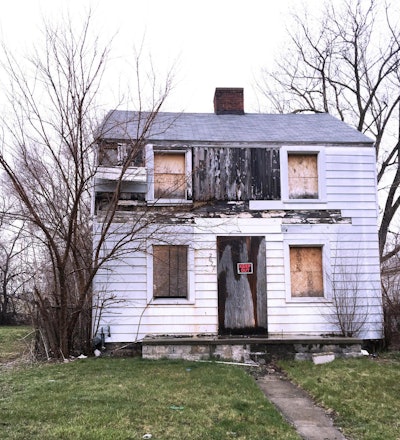Brown University’s Center for the Study of Slavery and Justice (CSSJ) and WaterFire Providence have partnered to host civil rights activist Rosa Parks’ former home before residing permanently at another location in the U.S. chosen by artist Ryan Mendoza.
The home is currently on public display in Mendoza’s backyard in Berlin, Germany and has been there since 2016. It’s scheduled to premiere to the Brown community April 3.
 Home where Rosa Parks once lived
Home where Rosa Parks once lived“We were contacted by the artist [Mendoza] sometime last year about whether or not we were interested in hosting the house on its return, as a kind of homecoming before it went on to its permanent place in the United States. We said ‘yes, and let’s get the ball rolling,’” said Dr. Anthony Bogues, CSSJ director and professor of Africana Studies at Brown.
In a phone interview with Diverse, Bogues said Brown is among the first universities, and possibly the very first, to “begin to think about its relationship to the Atlantic Slave Trade,” under the leadership of Dr. Ruth Simmons, the former university president.
CSSJ released a report in 2006 highlighting the connection between Brown University and the slave trade and recommending the creation of a center focused on this relationship, which is how CSSJ came to be.
“The university has a recent history of trying to confront its past to think about what does that past mean for the present and future, and how that past should influence and shape questions of higher education in America,” Bogues said.
Parks’ home will reside in the WaterFire Art Center, owned by WaterFire Providence, which is a few minutes from Brown’s campus. The center is “an old industrial building turned into an art center” and will be open for free for the public to visit upon arrival, from Thursday to Sunday each week until the exhibition period ends in June.
WaterFire Providence has partnered with Brown on several projects in the past, specifically with the John Nicholas Brown Center for Public Humanities and Cultural Heritage. WaterFire’s mission is to “inspire the community and to revitalize community through art, new ideas and new connections.”
“We did a whole project about H.P. Lovecraft and his influence in Rhode Island and on Gothic literature that was done by public humanities as part of innovative public presentation in an international conference on H.P. Lovecraft a few years ago,” said Barnaby Evans, executive artistic director at WaterFire.
Parks’ house will be the center of the exhibition project titled “The Civil Rights Movement: Unfinished Business.”
Several programs will take place in front of the home, such as a conference and workshop in May called “Race, Memorialization and Memory,” theater performances, gospel singing performances and panel discussions about the Civil Rights Movement and questions of race and America today.
“I think that one of the reasons for us to do [this] is given the climate of race in America today,” said Bogues. “We thought that the homecoming of the house and the expedition would be an opportunity for us to have some hard conversations around race, the future of race and an end to Black racism in this country.”
One of the programs for the project coincides with a master’s class offered in the Center for Public Humanities and Cultural Heritage, taught by Dr. Steven Lubar. The course is called “Masters in Public Humanities” and focuses on the work that goes into museums and exhibitions.
“The center usually takes on a project like this as part of this class each year, and this just seemed like a perfect example to work on,” Lubar told Diverse.
“It’s a bigger project than we usually do, especially higher profile, but it gives us a greater opportunity to have a real-life experience of teamwork, working with a larger public, going through all sorts of challenges of doing a historical exhibition.”
Three groups, each consisting of six students, are working on three different aspects of the showcase. One team is working on the exhibition prep work, doing things such as selecting images that will best tell the story, contacting archives and thinking about how the project will work. The second team focuses on the website and social media pages for the exhibition, and the third works on educational programs for the showcase, mostly for schools but also for the public.
The class has been preparing for the home’s arrival since a couple of weeks before the spring semester began.
The Rosa Parks House exhibition was supported by fundraisers staged by university president Christina Paxson and supporters such as Bank of America, the William and Flora Hewlett Foundation and the Nash Family Foundation of Manitowoc, Wis.



















